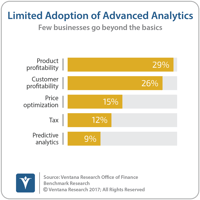PROS Holdings is a software vendor with two distinct but related sets of products. The company began in 1985 offering revenue management software to airlines, hospitality and rental car companies. More recently it added price and revenue management software focusing on B2B services, chemicals and energy, consumer goods manufacturers, food and beverage, healthcare, insurance and technology. This note focuses on the B2B portion of the business.
Read More
Topics:
Big Data,
Sales,
Customer Experience,
Marketing,
Office of Finance,
Analytics,
Data Preparation,
Sales Performance Management,
Financial Performance Management,
Price and Revenue Management,
Digital Marketing,
Digital Commerce,
Pricing and Promotion Management,
Sales Enablement and Execution
Vendavo recently held its annual Profit Summit, a combination of a user group conference and a forum for covering evolving trends and techniques in business-to-business (B2B) pricing. Especially in emerging categories like pricing and revenue management, this sort of event provides an opportunity to assess the state of the market and the maturity of the applications. As I’ve noted, adoption of price and revenue management software has been slow in the B2B segment of commerce due to multiple...
Read More
Topics:
Big Data,
Sales,
Office of Finance,
Analytics,
Cloud Computing,
Sales Performance Management,
Price and Revenue Management,
Digital Commerce,
Pricing and Promotion Management,
Sales Enablement and Execution,
Sales Planning and Analytics
Pricing is an issue that affects almost every for-profit company that doesn’t sell purely commodity products. A corporation’s approach to pricing can range from highly disciplined to ad hoc and from fully centralized to decentralized. The issue of centralized or decentralized depends a great deal on the markets the company serves, its organizational structure and its culture. However, a disciplined approach to price setting and negotiation is always superior to an ad hoc approach. This is...
Read More
Topics:
Big Data,
Office of Finance,
Continuous Planning,
Analytics,
Sales Performance Management,
Financial Performance Management,
Price and Revenue Management,
Pricing and Promotion Management,
Sales Enablement and Execution,
ERP and Continuous Accounting,
Sales Planning and Analytics
More businesses are using software to implement and support a strategic pricing strategy designed to optimize revenue and margins in business-to-business (B2B) transactions because it can help improve results at the bottom line. “Optimize” in this instance means managing the trade-off that usually exists between revenue and profitability objectives in order to support a company’s strategy and capabilities in a given market. Business-to-business pricing management is Ventana Research’s term for...
Read More
Topics:
Big Data,
Data Science,
Sales,
Office of Finance,
Analytics,
Cloud Computing,
Sales Performance Management,
Financial Performance Management,
Price and Revenue Management,
Pricing and Promotion Management,
Sales Enablement and Execution,
ERP and Continuous Accounting
Price and revenue optimization (PRO) is a business discipline used to produce demand-based pricing; it applies market segmentation techniques to achieve strategic objectives such as increased profitability or greater market share. In essence, PRO enables companies to surf the demand curve using dynamic rather than fixed pricing to achieve the most desirable trade-offs between revenue volume and profit margins. The trade-off is defined by strategic factors such as the company’s market position,...
Read More
Topics:
Big Data,
Data Science,
Sales,
Office of Finance,
Analytics,
Cloud Computing,
Sales Performance Management,
Financial Performance Management,
Price and Revenue Management,
Pricing and Promotion Management,
Sales Enablement and Execution,
ERP and Continuous Accounting














